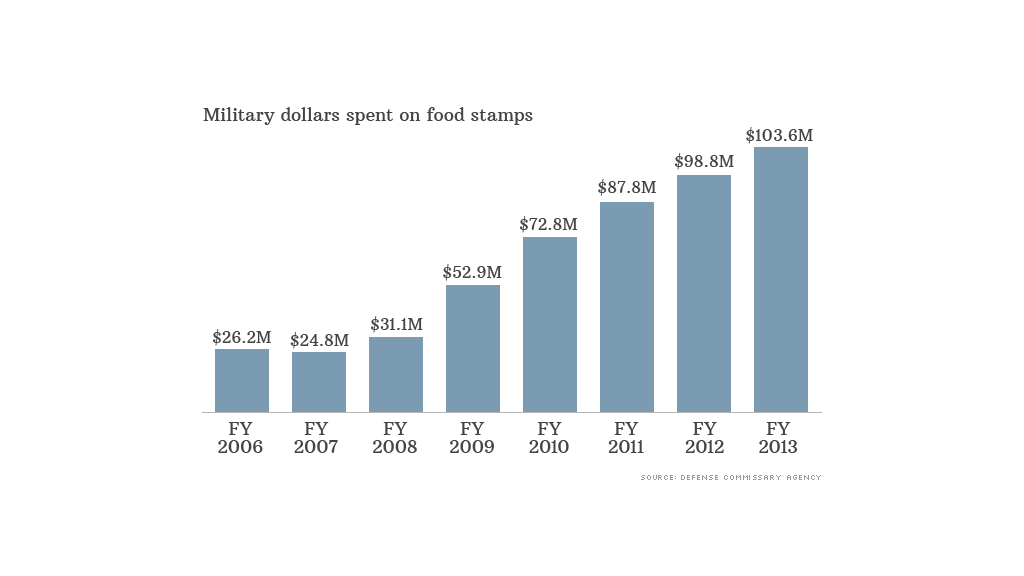
More military families used food stamps to buy milk, cheese, meat and bread at military grocers last year.
Food stamp redemption at military grocers has been rising steadily since the beginning of the recession in 2008. Nearly $104 million worth of food stamps was redeemed at military commissaries in the fiscal year ended Sept. 30.
"I'm amazed, but there's a very real need," said Thomas Greer, spokesman for Operation Homefront, a nonprofit that helps soldiers on the financial brink nationwide.
Some of the growth in soldiers' redemption of food stamps reflects the weak economic recovery, especially for spouses looking for jobs. In 2012, there was a 30% unemployment rate among spouses off active-duty military who were 18 to 24 years old, according to the Military Officers Association of America, which released the survey last week.
Spouses who have to relocate every few years have a tough time finding work in the private sector.
Related: Senate votes to restore military pensions
During the recession, some states lowered eligibility for food stamps, making it easier to qualify. That could account for some of the growth in use by active-duty military, said Joyce Raezer, executive director of the National Military Family Association.
"It was easier for some of those families right on the cusp to qualify," she said.
In 2011, about 5,000 active-duty military members were on food stamps, making up less than a tenth of 1% of the 44 million on food stamps, according to the USDA, which has yet to update its figures.
Pentagon officials say they don't track who exactly is redeeming food stamps at military grocers, called commissaries. But they say that it's the bottom of the ranks, often the most junior 18 to 20-somethings who already have several children.
Base pay for a new soldier with a spouse and kid is around $20,000, just above the poverty line. Although that doesn't include housing or food allowances. The housing and food help put the income of an Army private with two years of experience a bit more than $40,000, the Pentagon says.
In 2013, Operation Homefront received 2,968 emergency requests for food help, more than any other kind of request for help. The numbers are down significantly compared to two years ago, but they're still nearly three times what they had been in 2008.
Related: My grocery bill will skyrocket if military stores close
"When there are unexpected disruptions for a family with a junior (enlisted) member, it can become a challenge to put food on table," Greer said. "Cost of food remains a very real challenge."

The good news is that the growth in food-stamp redemption at military grocers has slowed.
The 2013 figure was only a 5% uptick from 2012, less the the 13% increase in growth in 2012 and the record 70% hike in growth in food stamps use in 2009, according to the Defense Commissary Agency.
Food stamps has been a hot topic in Washington for months, as enrollment in the anti-poverty program remains at record high levels. Currently, 47 million Americans depend on food stamps. Half of them are children and a quarter of them are seniors.
Enrollment in the program soared during the Great Recession, with nearly 15% of the population getting benefits, according to recent federal data. The average monthly benefit was $134 per person in October.
Congress allowed cuts in the food stamps program last November, with the average recipient losing about $11 thanks to the expiration of a recession-era boost in funding. Active-duty military families were affected by those cuts.


